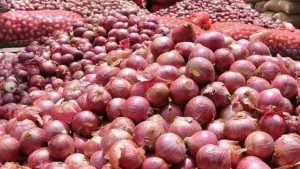On a fertilizer label, the initials “NPK” stand for nitrogen, phosphorus, and potassium, the three major nutrients plants require to flourish. The figures on the label represent the nitrogen, phosphorus, and potassium ratios (in percentages) in the fertilizer container.
Even if you don’t see the letters N-P-K but see a sequence of three numbers, such as 5-10-5, you can correctly deduce that it stands for 5% nitrogen, 10% phosphorus, and 5% potassium, always in that order. The fertilizer contains 20% nutrients, while the remaining 80% consists of minor nutrients or fillers. Plants require around 16 nutrients, some of which they obtain from the air and water, and others from soil, such as iron, calcium, and chlorine.
NPK Fertilizer Varieties
Balanced Fertilizer
A fertilizer labeled “10-10-10” is called a balanced or “complete” Fertilizer since its nitrogen, phosphorus, and potassium contents are equal. Meanwhile, a Fertilizer labeled “10-0-10” is an “incomplete Fertilizer.”
Organic Fertilizer
Soil nutrients coming from plants, animals, or minerals make up organic fertilizer components. Products marked “organic Fertilizer” must specify which nutrients are organic and if they are synthetic or natural in proportion. For example, the label may say, “20 percent nitrogen (6 percent synthetic, 14 percent organic).”
Organic Fertilizers composed entirely of natural materials frequently have lower concentrations of the three key nutrients, necessitating the usage of higher amounts. The advantage is that they generally contain a lot of extra nutrients that nourish both the plant and the soil.
Inorganic Fertilizer
A partial Fertilizer is not always inferior to a complete Fertilizer. Choosing the best Fertilizer for your requirements is dependent on several factors. If your soil already has an excess of one of the three nutrients in NPK, adding more of it may harm some of your plants; in this case, an incomplete or unbalanced Fertilizer may be the best solution.
As a result, before adding Fertilizer, it is critical to examine your soil. Otherwise, every time you add something to your soil, the consequence (good or negative) is completely unpredictable.
Also Read:- The Need for Traceability in Agriculture: Ensuring Transparency and Safety
Types of Inorganic Fertilizers
Nitrogen:- Nitrogen, the first number in an NPK sequence, is vital in leaf growth. Since it plays a key role in plant coloring and chlorophyll synthesis. Nitrogen-rich fertilizers are frequently used for grass and other plants where green leaf development is more essential than blooming. Gardeners occasionally struggle with the issue of nitrogen depletion; the yellowing of normally green plants is a sign of a nitrogen deficit.
Phosphorus:- In an NPK series, the middle digit represents the amount of phosphorous in the fertilizer. Phosphorus is a crucial nutrient for your plants in spring since it is important for root development, flowering, and fruiting. The development of seeds and other basic plant functions like roots depend on phosphorus.
Potassium:- The final number in the list of major components indicates the product’s potassium content. Potassium contributes to the overall health and vitality of plants. It is widely known for facilitating the transport of water and nutrients throughout the plant. It increases plant resilience to disease and is especially important in cold or dry climates.
Other Substances:- Most Fertilizers have additional components stated on the side or back label in addition to the primary nutrients provided on the front label. Other nutrients such as calcium, magnesium, iron, micronutrients, and even the proportion of organic matter and fillers may be included in this. Even though they are not as important as the primary nutrients, minerals, and micronutrients are nonetheless present in tiny levels in excellent fertilizer.
Conclusion
To promote overall soil health, it’s highly recommended to complement the use of commercial synthetic fertilizer with organic matter, such as compost or manure. This combination helps maintain a balanced soil environment and improves fertility for better plant growth. Now that you are aware of what NPK stands for, you can confidently navigate the Fertilizer aisle of your local garden center and select the appropriate Fertilizer for your plants.





